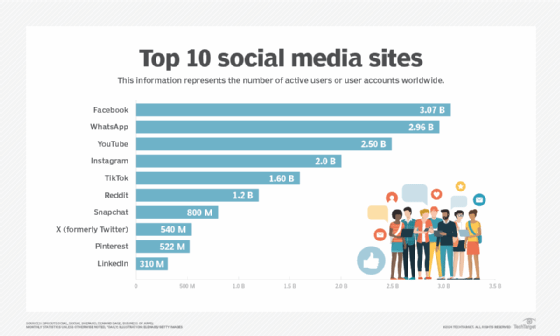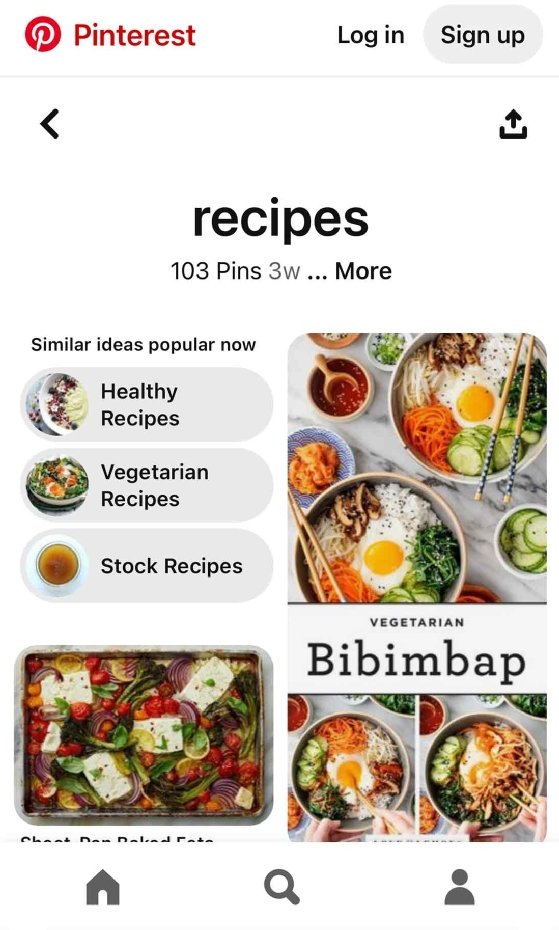What is Pinterest?
Pinterest is a social Curation website for sharing and categorizing images found online. The site is described in its own content as a visual bookmarking site. Pinterest is a portmanteau of the words pin and interest.
While the focus of the site is visual, Pinterest requires brief descriptions.
The service was founded by Paul Sciarra, Evan Sharp and Ben Silbermann. It launched as a closed beta in March 2010. Membership was initially invitation-only; it is now open to the general public.
Silbermann pitched Pinterest as a "catalog of ideas" rather than a social networking platform. He said the emphasis is on empowering users to "go out and do that thing." The site has become a popular social media platform.

How does Pinterest work?
Using the Pinterest app, users can add a "Pin it" button to their browser and then select and "pin" online images to virtual pinboards on Pinterest. Users create boards to organize images into categories. Pinterest categories include architecture, art, DIY and crafts, fashion, food and drink, home décor, science and travel, among other options.
Clicking a Pinterest image leads to the original source. The following are some examples:
- Clicking on a picture of a pair of shoes links to a site where they can be purchased.
- An image of blueberry pancakes links to the recipe.
- A picture of a whimsical birdhouse links to the assembly instructions.
Users can browse and search image content. They can also follow other users' Pinterest boards and specific image selections, as well as like and repin other users' pins.
To find boards to pin to, users can search for them or scroll through their home feed.
Pinterest also includes a visual search or reverse image search feature called Lens. Lens lets users search Pinterest based on a picture taken from their camera or from the camera roll on a mobile phone. Pinterest uses machine learning to focus in on the main object of the photo and return matching search results.
Useful Pinterest terms and features include the following:
- A pin is any content shared on Pinterest.
- Pinners are Pinterest users.
- A board is where users organize their Pins.
- A group board lets users contribute to a board created by another user, who grants contributors permission to do so.
- Pincodes are like QR codes for Pinterest. They let users share Pinterest accounts.

What is Pinterest used for?
Pinterest is used to identify and share image and video content. It exposes users to new ideas, products and content and lets them share what they find with other users.
Pinterest users pin images and videos of interest to pin boards. They also can discover and curate other people's content. The website is used to find inspiration, learn a new skill and shop for products using ideas from Pinterest content.
Businesses use Pinterest to showcase products and services and market to users with aligned interests and hobbies. Business accounts provide access to Pinterest analytics, advertising services and exclusive content formats. Other platforms, like Etsy, Instagram and YouTube, can be linked to Pinterest so pins from those platforms can be attributed to the business.
Pinterest tags can be used to track the actions visitors take on a website after seeing a company's Pinterest advertisement. The tag is a piece of code embedded in a website. Tags help businesses measure campaign performance and optimize conversions.
A business account provides access to rich Pins, which automatically update a business's Pinterest content when content on that company's website changes. For example, if pricing on a product pin changes, rich Pins reflect that on Pinterest.
Benefits of using Pinterest
The benefits of using Pinterest as a marketing tool for small businesses include the following:
- Increase customer base. A large number of active users visit Pinterest, many with the intention of buying something.
- Spot emerging trends. Small business owners can follow influencers in their industry to learn about new trends.
- Drive traffic. Pinterest traffic can be funneled to a company's website. Well-optimized pins are likely to gain many impressions and repins.
- Gain insights from analytics. Pinterest business accounts provide information on impressions, engagements, clicks, views and other relevant statistics.
- Targeted ads. Pinterest lets users create targeted ad campaigns that target a specific user interest and help create brand awareness.
Challenges of using Pinterest
Using Pinterest for business comes with challenges:
- Time-consuming. Curating Pinterest can be time-consuming.
- Niche market. Pinterest's user base is narrower than other social media sites; its demographics are predominantly women between the ages of 25-50. This social media marketing segment may be too narrow for some businesses.
- Visual platform. Marketers should have a visual strategy to use Pinterest to its full potential.
- Not a sales tool. Pinterest was originally designed to inspire users and show them new ideas. Businesses must provide content that informs and inspires users rather than attempts to directly sell products.
- Weak learning content. Many Pinterest marketing strategy courses lack depth and are out of date; these can lead small business owners astray.
Pinterest's visual approach to digital marketing is one component of a strong e-commerce content strategy. Learn other ways to drive online business and garner likes, shares and, ultimately, sales.